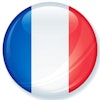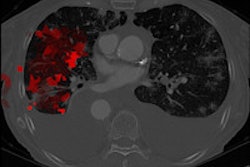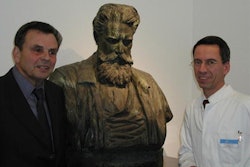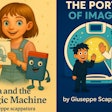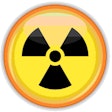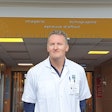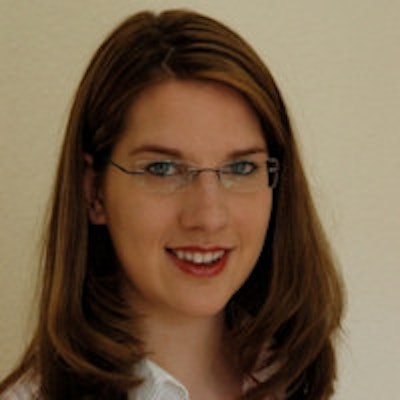
In a pelvic CT report, the text reads: "Metallic abrasion following total hip replacement? Discuss with ZuK." "Discuss with ZuK" -- what does that actually mean? The quest for the answer started with a search engine, where I first came across the Unidentified Diseases Centre (UDC) in Marburg and, inevitably, across Dr. Jürgen Schäfer, who is inextricably linked to the facility.
My Google search returned a good 153,000 hits for the man in charge at the UDC. This appears to be due to his presence in the media, which has really been growing over the past couple of years. The cardiologist first gained attention five years ago when he started using the "Dr. House" TV series in explaining difficult medical cases in order to train medical students to develop the systematic-complex mindset of a diagnostician. In 2013, the doctor, who has since been dubbed "The German Dr. House" in the media, received the Pulsus Award as "Best Doctor of the Year" for this unusual teaching method.
Starting point for desperate patients -- and perplexed doctors
Like the character from whom he acquired his nickname, Schäfer specializes in solving medical conundrums: "Sometimes medicine is like a detective story," noted the professor, who has a passion for this particular challenge. For a number of years, he has been the man to whom people have turned at Marburg University Clinic whenever there have been particularly complex cases to unravel.
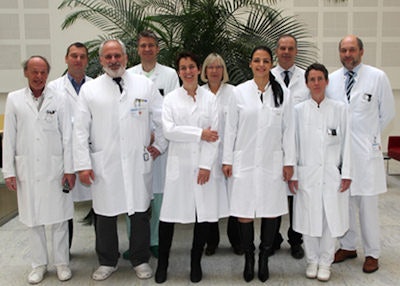 The team at the Unidentified Diseases Centre (from left to right): Dr. Eduard Walthers (radiology), Dr. Volker Ellenrieder (gastroenterology), Dr. Jürgen Schäfer (head of the UDC, cardiology and endocrinology), Dr. Andreas Burchert (oncology), Sabine Battenfeld (UDC), Dr. Beate Kolb-Niemann (psychosomatics), Dr. Bilgen Kurt (medicine), Dr. Richard Dodel (neurology), Dr. Birgit Kortus-Götze (nephrology), and Dr. Andreas Jerrentrup (deputy head of the UDC, respiratory disorders). Source: Last accessed on 25 June 2014.
The team at the Unidentified Diseases Centre (from left to right): Dr. Eduard Walthers (radiology), Dr. Volker Ellenrieder (gastroenterology), Dr. Jürgen Schäfer (head of the UDC, cardiology and endocrinology), Dr. Andreas Burchert (oncology), Sabine Battenfeld (UDC), Dr. Beate Kolb-Niemann (psychosomatics), Dr. Bilgen Kurt (medicine), Dr. Richard Dodel (neurology), Dr. Birgit Kortus-Götze (nephrology), and Dr. Andreas Jerrentrup (deputy head of the UDC, respiratory disorders). Source: Last accessed on 25 June 2014.As his reputation has spread over the past few years, so the number of enquiries -- both from desperate patients and from colleagues -- has been increasing. Ultimately, the volume of case referrals simply overwhelmed everyday clinical practice. The idea is that a remedy will come from the UDC, which was opened in December 2013. It is the first establishment of its kind and now an official starting point for doctors and patients who have not come up with a satisfactory diagnosis, despite extensive previous investigations.
Often, affected patients will already have gone through a whole host of medical consultations and diagnostics. Many of them will have been passed from doctor to doctor for years, will have spent a considerable amount of time in hospitals, and will have been given a number of diagnoses, but still they lack effective support in dealing with their problems. They are still none the wiser as to what they are suffering from or as to whether they are actually ill.
It is common for these people to have rare diseases; nonetheless, 4 million people in Germany suffer from them. There are several centers all around the country that deal with rare disorders. But how are lay people, in medical terms, which most patients are, to know whether or not they are suffering from a rare disorder? It was for this reason that the name "Unknown Diseases Centre" was coined for the new facility, making no reference to causes of disorders or to how common they are.
I can see what you cannot see -- that's teamwork
Initially, affected individuals or perplexed attending physicians send details of their previous findings, along with results, to the UCD. The primary objective is to work alongside these attending physicians and their patients in identifying active issues and available solutions. The key to this lies in interdisciplinary cooperation.
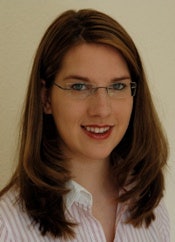 Dr. Annika Keulers.
Dr. Annika Keulers.Every Thursday, cases are processed within a team made up of specialists working in a number of different fields, such as radiology, gastroenterology, oncology, neurology, and psychosomatics. All medical staff practicing at the UCD are "normal" Marburg University Clinic doctors. Each department has a member of staff designated to deal with UCD matters, taking part in meetings and representing his/her specialty. For the radiology clinic, Dr. Eduard Walthers is attached to the UCD. He is an extremely experienced oberarzt (senior member of the medical staff) who specializes in conventional x-ray imaging.
Firstly, the documentation is examined and a thorough search is made for any links that have not yet been identified. It is a well-known fact that each specialty has its own way of viewing problems and these differing approaches are used to compile a list of differential diagnoses. There is also a new purpose-built search engine that can be used to show links between symptoms. Often, this good multidisciplinary cooperation is all that is needed to find a diagnosis that can subsequently be verified by means of further tests.
If this course of action fails to yield a satisfactory outcome, a standardized symptom screening process will take place, based on questionnaires and discussions. If necessary, use may also be made of special investigations such as toxicological screening for residue from heavy metals or trace elements, fatty acid/amino acid analyses, or even genetic sequencing.
Radiology's important role at the UDC
In diagnostics, it almost goes without saying that radiology is a key discipline. At the UDC, the bulk of the radiologists' work consists of putting previous imaging results back under the magnifying glass for detailed examination in the specific context of various queries and, possibly, using other diagnostic imaging methods, even unconventional ones, in the search for an explanation.
Schäfer feels the thing that sets the UDC apart from other areas of clinical practice can be summarized as follows: having a passion for and being stimulated by medical conundrums, consistent diagnostics throughout, with lasting tenacity, and fantastic interdisciplinary cooperation. This is because, in the words of the head of the UDC, "Solving complex cases is real teamwork," requiring interdisciplinary cooperation, along with knowledge that extends across multiple specialties. Unfortunately, with the way in which the healthcare system is currently set up, with increasing specialization, both of these are often in short supply. It is, therefore, understandable that a pattern of symptoms that extends over a variety of specialties gets attributed to different causes -- when dealing with lower abdominal pain, a gynecologist's assessment will differ from that of a surgical or medical colleague. Even within a given discipline, such as surgery, the ideas of a soft-tissue surgeon as to the factors behind problems will not be same as those of colleagues practicing in trauma or cardiac surgery, for example.
The same applies to the different angles from which cardiologists, nephrologists, gastroenterologists, and oncologists view things. They all work in medicine, but as a result of the increasing amount of work in individual specialties, there is the risk of eventually losing oversight of the "bigger picture." This is precisely the reason why it is so common for diseases to remain unidentified and why, at the same time, the Marburg facility is so strong.
Actual cases -- or how psychosis turns into a metabolic disorder
Over the past few years, Schäfer and his team have already been able to assist a number of patients. Often, the key factor in coming to grips with a problem in its entirety is the fresh, complete view taken by a team that has not been involved previously; this means that, in the end, all it takes to get a result is a few specific questions or tests.
More detailed scrutiny of a case involving a patient diagnosed with "inflammation of the heart valves" revealed that he was suffering from systemic lupus.
Another patient, a woman, had been labelled as "psychotic," however her symptoms were being caused by Wilson's Disease, a rare copper storage disorder.
Despite vehement protestations from the patient, a very thin young man lived for years with a diagnosis of "weight loss." In Marburg, slight spinal distortion was noted, along with conspicuous moles on the hand, also slightly webbed fingers. When all these symptoms were entered into a special rare diseases database, the doctors finally discovered the patient was suffering from "Friedman-Goodmann Syndrome." Worldwide, this syndrome had only been diagnosed once previously.
Time and time again, an elderly man developed unnaturally dark skin pigmentation. His wife reported that he sometimes collapsed in the garden and that he had lost the ability to clean his teeth. In Marburg, these strange symptoms were put down to a diagnosis of adrenoleukodystrophy. Worldwide, only a few cases are known, once again.
Further case
It was suspected that a male UDC patient, whom I had come across as a pelvic CT scan in the report list in our department, was suffering from "metallic abrasion following total hip replacement" (see above). Details of the history behind this fascinating case can be found in the SpiegelOnline News Magazine (Nachrichtenmagazin).
Thus, a query such as "metallic abrasion following total hip replacement," with a relatively ordinary ring to it, can mask a highly complex case. Here, a dual-source pelvic CT scan was carried out, in order to look into the various absorption spectra and to glean information from them regarding the type of material with which we were dealing in the foreign bodies. A more detailed explanation of this would go way beyond the scope and level of our training. However, I hope that I have been able to give you a glimpse into the fascinating work of the UDC, which is an inspiration for anybody who regards medicine as detective work!
Dr. Annika Keulers wrote this article when she was working at the radiology department of Marburg University Hospital. She is now a resident physician at University Hospital RWTH in Aachen, Germany.
Editor's note: This is an edited version of a translation of an article published online in German by the German Radiological Society (DRG) on www.hellste-koepfe.de. Translation by Syntacta Translation & Interpreting.
The comments and observations expressed herein do not necessarily reflect the opinions of AuntMinnieEurope.com, nor should they be construed as an endorsement or admonishment of any particular vendor, analyst, industry consultant, or consulting group.



